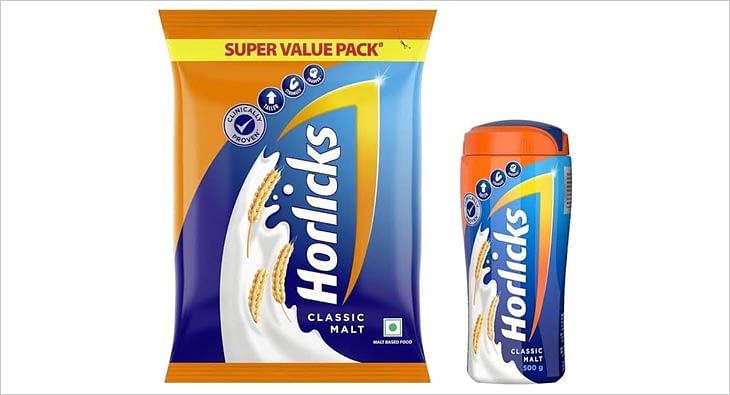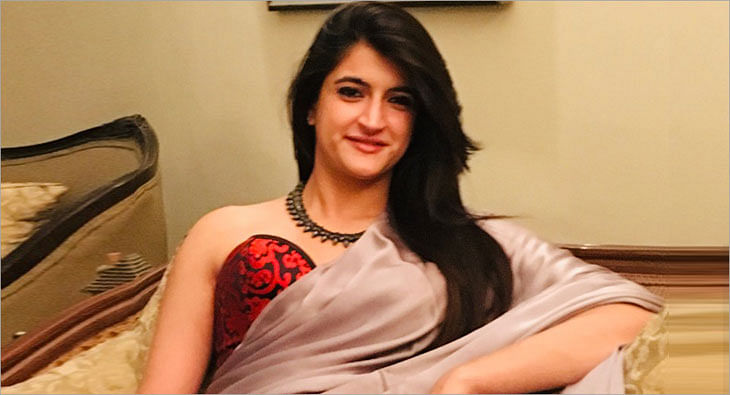Morris Garages to begin their India Chapter in 2019
In an interaction with exchange4media, Adam Sloman, General Manager, Morris Garages, Car Club and Pallavi Singh, Marketing Head, Morris Garages, open up about their journey to start a new chapter in India
Morris Garages' (MG) story began in 1924, in the UK and it included stunning sports cars and cabriolets which were much loved rides for many celebrities, including British Prime Ministers and members of the royal family. These cars were imported to the Indian markets as well.
After all these years, MG Motor India (MGMI), was finally incorporated on February 7, 2017, and will soon begin their India chapter with their first Indian manufactured car in the year 2019.
In an interaction with exchange4media, Adam Sloman, General Manager, Morris Garages, Car Club and Pallavi Singh, Marketing Head India, Morris Garages, opened up about their journey to start a new chapter of MG in India.
Talking about how MG is going to expand in India, Sloman said, “We are going to start fresh with MG India, and will bring our expertise and experiences to the Indian market. We are not just focusing on the new MGs, but also trying to bring the taste of old, classic and vintage MGs. We are going to bring over a whole new experience with the help of MG owners. In the month of March and July, we have our big event MG live, which has been running for the past 70 years in the UK. This brings people together across the country. We are planning to do this with the Indian market as well.”
“We want to make an emotional connect with the customers that bring people together because of a car. The car acts as a catalyst here,” added Sloman.
Discussing the Indian economy and comparing the Indian market from the global market, Singh elaborated, “India is evolving, and of course it is different. I always keep saying what the UK and US were during the '60s and '70s, India is that today. There is so much of disruption, so many players coming in, so many brands coming in; everybody wants to experience something new from a brand point of view. There’s a huge opportunity here and we are coming at the right time and we will be able to bring something different and new. When I say new, I mean it is going to be very innovative from an experience, technology and a customer experience point of view. There’s a lot happening in our country and there is an opportunity for everybody to grow. Brands which are already growing here will grow further and the brands like us, which are coming in now, will also grow.”
India has been welcoming a lot of international brands so far and those brands are progressively doing great. Focusing on how international brands are paving their inroads in the Indian markets, Sloman commented, “A country like India is going to lead where the world goes in next 15-20 years. A country like India is emerging and it’s really exciting to be here and to see things happening. Given our shared heritage between Britain and India, it’s really exciting to see MG being a part of that.”
“A lot of international brands are coming to India, thinking they have a kind of expertise everywhere else except India. India is a very important market for MG and in a lot of ways, MG is going to become global from India. A lot of brands have come and said that we have expanded everywhere, now let’s expand in India. But the in case of MG, it was taken over by SEIC in 2007, so you’ll see their urge to grow,” added Singh.
MG will launch their first manufactured car in 2019 and is yet to go through the roller-coaster ride in the Indian market.
“We’ll launch in 2019. Our intent is to study a market and we are doing a
lot of research. We’ll be meeting MG car owners, getting the car club from the UK and hosting MG live in June. We are doing all this to develop the foundation, look at the experience we can partner with, and most importantly, build a lot of good content. Today from a marketing brand point of view, it’s all about content building and not just about digital and advertising, but for us, it’s about ‘Cigital;’ that is the community and digital. There is so much data on the internet today, but how you synthesize that data and use it in the interest of a consumer is what we are planning to do. From a product bringing you to the brand side, we are going to do a lot of different things. Content, community and creating that differentiation through innovation are going to be the key for us,” said Singh.
Talking about how MG will grow in India and his expectations from the Indian market, Sloman said, “There is massive potential for MG cars to grow in India. We had spent almost 90 years as a club back in the UK, putting together people with different backgrounds and different cars, and I think the same expansion can happen in India. We are planning to create a genre that helps old MG and new MG owners to come together.”
The journey for MG in India is planned and the brand is strategising to mark their presence on various platforms other than digital.
“We are really going to talk to communities through digital, which doesn’t mean that we’ll only be on digital. We will look at the right platforms according to the right time because the consumer today is an omni personality. So we’ll be looking at advertising at the right time and right place. We had already done our print run with TOI and HT, which is on the dealer experience event. We’ll build content that is relevant to us,” said Singh.
Talking about how important is content in building a brand, Singh added, “Everybody talks about building content, but the only difference that every marketer is learning today is that we want to do the content through the real owners and not through the brand. That’s why experience comes into play.”
Read more news about Marketing News, Advertising News, PR and Corporate Communication News, Digital News, People Movement News
For more updates, be socially connected with us onInstagram, LinkedIn, Twitter, Facebook Youtube, Whatsapp & Google News
About 60% Instagram influencers in India have fake followers: Report
As per a media report, influencer marketing platform KlugKlug has found that only 2.48 million profiles out of the 8 million have ‘high-quality’ followers
Two of three Instagram influencers in India have more than 60 per cent fake followers, a report by influencer marketing platform KlugKlug shows.
This is particularly true for the beauty and fashion sector, the report noted.
Other countries that have influencers with fake followers are Brazil, the UAE and Indonesia.
As per media reports, such Instagram fake followers can be roped in for as little as Rs 10 to a high of Rs 1,000.
According to Klug Klug India, only 2.48 million profiles out of the 8 million have high-quality followers.
A number of other categories have also been buying fake followers, media reports have noted.
As per a media expert, quoted in the reports, brands are finding it difficult to identify and curb the menace of fake followers and bots.
In a recent setback for influencers the Central Consumer Protection Authority (CCPA) has said those promoting activities like gambling and betting are equally liable as the companies promoting the same.
15% consumers enhance their user experience through virtual assistants: Kantar report
According to Soumya Mohanty, Managing Director & Chief Client Officer- South Asia, Insights Division, Kantar, less than 1% of ads get tested due to lack of time
Marketing data and analytics firm Kantar has unveiled a report that studies the burgeoning AI market to dish out actionable insights for marketers. Within AI, virtual assistants are the fastest growing segment. The report noted that 15% consumers enhanced their ‘user experience through virtual assistants’. This segment is the fastest growing at 27% YoY.
According to the study, while ‘fitness’ and ‘social media’ apps are amongst the leading categories, driving AI adoption (with an average of 2.3 AI led features embedded in these applications), segments like ‘BFSI’, ‘job search’ and ‘short video’ apps are relatively slow in AI adoption, with an average of 1.2 features each. Entertainment apps, digital commerce and pharmacy apps stand somewhere in the middle with 2.0 & 1.8 AI features being adopted, respectively.
Additionally, the report said that while 90% of marketing and sales leaders think their organisations should be using AI “often”, 60% said their organisations “rarely or never” do. Speaking to exchange4media, Soumya Mohanty, Managing Director & Chief Client Officer- South Asia, Insights Division, Kantar highlighted that currently there are a lot of organisations who know that there is something called AI, but haven’t yet figured out how it could help them holistically.
“A lot of the AI just gets used for efficiency purposes, so repetitive tasks get automated,” Mohanty pointed out. Data also plays a big role in why certain organisations are struggling with how to use AI.
For instance, Mohanty explained that in segments like D2C, telecom etc. there is a lot of primary or first-party data. So being able to leverage AI also gets easier. “It's the traditional large sort of FMCG type companies where data sits in silos. You don't really have one single source of data where it's a little difficult to use the full power of AI, because the full power of AI also needs a lot of data sitting in a structure that you can use,” she added.
So, can AI help marketers have a unified view of data? No, says Mohanty. “AI does not help marketers get a unified view of data. Once you have data in a unified way, AI can help you do a lot more with that data.”
According to her, organisations today need to have good, strong data warehousing. “It needs to make sense because a lot of the silos are also because everybody owns one part of it. A lot of people have their own analytics teams internally, so there are a lot of agendas and stakeholders. And then we say data is in silos because fundamentally, when you're doing something internally, different people have different stakes in it,” Mohanty added.
Puneet Avasthi, Senior Executive Director, South Asia, Insights Division, Kantar shared that most organisations are now heavily investing in creating first-party data sets. “Companies that have first party data about their consumers and transactions or interactions that they have with the brand are going to be able to leverage that more effectively to create sharper profiles for the brand as such for the consumer and build relevant recommendations at the right moments.
Panning out she also highlighted how AI can be leveraged to enhance market research and make it more accessible, a part of which Kantar is itself involved in. “A lot of times people say that we can't test an ad because we don't have time. So less than 1% of advertising gets tested and just gets put out. Does it work when it gets put out? It is the question the audience should answer, because so many times, it backfires,” Mohanty shared. Apparently, digital particularly doesn't get tested because organisations just do a/b testing and leave it at that.
Speaking of preferred use cases of AI, Avasthi added that various businesses and brands are looking at creating an experience for the brand that is in line with the brand's architecture and progress across all touch points. “That is something that the AI engines that are working behind can ensure, that all such interactions are consistently delivered across different virtual assistants or chatbots that are available to the consumer,” he said.
The other use case, according to Avasthi, is ensuring that there is greater visibility for the brand in the digital sphere as such, through various recommendation engines, when a certain need is being looked for and to throw up the right kind of information about the brand so that the brand message is amplified in the mind of the consumers.
Among other insights from the Kantar AI report is that 88% consumers used AI based algorithms which analysed their preferences, behaviours, and interests to create personalised recommendations for tailored experiences. This segment grew at 6 % YoY. At 21%, ‘smart home automation’ is a smaller segment but growing at 25% YoY.












 Share
Share
